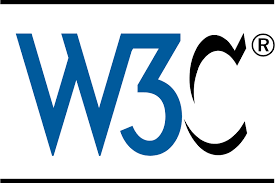Transmission of Time Code in the Ancillary Data Space — Amendment 1
The purpose of this amendment is to add support for Progressive video systems with 48 and 48/1.001 Hz frame rates.

The purpose of this amendment is to add support for Progressive video systems with 48 and 48/1.001 Hz frame rates.

The mission of the Scalable Vector Graphics (SVG) Working Group is to develop and maintain SVG.
Scalable Vector Graphics (SVG) is a language that allows authors and users to describe graphics in a way which is scalable to different device resolutions, acessible, and animatable.
The SVG WG develops the SVG specifications. They consist of the following, somewhat independent technologies, all of which are in scope for the SVG Working Group:
As a primary focus in this charter period, the group will concentrate on the stabilization and interoperability testing of the core SVG 2 specification. As part of that testing, features which are in the reference draft of SVG2 and which do not meet the stability and interoperability requirements for a Proposed Recommendation may be moved to separate specification modules, work on which would remain in scope, but at a lower priority.
As a secondary focus, the group may address modules for new graphical features for SVG, once there is broad consensus on adding each such feature to the Web Platform. The SVG Community Group (and also any other fora, such as WICG) will incubate new proposals. Once an incubated proposal is implemented and available (in nightly or testing builds) in at least one major browser, and has support from other SVG implementers, it may be adopted by the SVG Working Group. A requirements document will be used to collect together these features.

The current area of work for JTC 1/SC 24 consists of:

This standard specifies the frequency response and operating level of recorders and reproducers for audio records for 1-in type B helical-scan video tape recording.

This standard specifies the dimensions and location of the video, audio, and tracking-control records and the longitudinal separation of the simultaneously recorded information of the video and audio records, as recorded on 1-in type B helical-scan television tape recordings.

This standard specifies the basic system parameters, i.e., the positions of recording head gaps, the scanning configuration, the axis of rotation of the video head wheel, and the appropriate tape tension for 1-in type B helical-scan television tape recorders for 525/60 monochrome or NTSC color systems.

This standard specifies time code formats with the frame counts 72, 96, 100 and 120 and the frame count 120 with drop-frame compensation.

This standard defines a transmission format for conveyance of linear (LTC) or vertical interval (VITC) time code data formatted according to SMPTE ST 12-1 in 8-, 10-, or 12-bit digital television data interfaces.

This standard defines a transmission format for conveyance of linear (LTC) or vertical interval (VITC) time code data formatted according to SMPTE 12M-1 in 8-, 10-, or 12-bit digital television data interfaces.

3D Printing and scanning

The scope of the committee includes the definition and standardisation of digital long-term archive formats for cinematographic works. In addition methods for ensuring data integrity and quality shall be specified. The standard is applicable for digitized analogue films as well as digital born content. 2 Reference software to guarantee interoperability amongst vendors and heritage institutions shall be developed. The scope does not include the standardization of distribution formats
